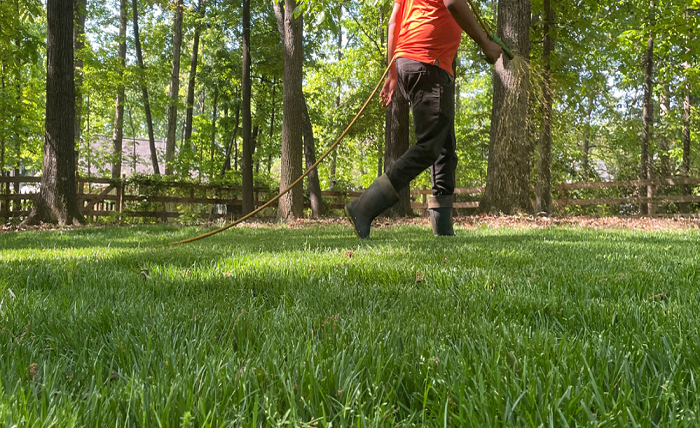Exploring the Influence of Boss Turf in Business and Leadership

“Boss Turf” is a term that encapsulates the influence and control a leader has within their domain, be it in an office, a field, or any professional environment. It reflects how leaders manage their areas of responsibility and the cultural imprint they leave on their workspace. This concept is pivotal in understanding leadership dynamics, as it directly affects team morale, productivity, and the overall atmosphere of the workplace. Leaders who establish a positive “Boss Turf” create environments that foster growth, innovation, and collaboration. Conversely, a negatively perceived turf can lead to a decrease in team performance and job satisfaction.
The Role of “Boss Turf” in Workplace Culture
The impact of messiturf10 on workplace culture cannot be overstated. A leader’s approach to managing their turf sets the tone for the organizational culture. Leaders who are approachable and encourage open communication cultivate a collaborative “Boss Turf.” This openness typically results in higher employee engagement and loyalty. On the other hand, leaders who rule their turf with a strict, authoritarian style may promote a culture of fear and competition, which can stifle creativity and employee satisfaction. Therefore, understanding and intentionally shaping one’s “Boss Turf” is crucial for building a positive workplace culture.
Strategies for Developing a Positive “Boss Turf”
Developing a positive “Boss Turf” requires deliberate strategies and leadership skills that emphasize respect, integrity, and inclusiveness. Leaders should focus on building trust and respect, fostering transparent communication, and encouraging team collaboration. Creating a supportive environment where employees feel valued and empowered to contribute their best work is essential. Additionally, leaders should be aware of the diverse needs of their team members and strive to accommodate these needs within their “Boss Turf” to enhance productivity and harmony in the workplace.
The Impact of “Boss Turf” on Employee Performance
The nature of a leader’s “Boss Turf” directly impacts employee performance. A turf that promotes psychological safety, where team members feel safe to express ideas and take risks without fear of retribution, leads to higher innovation and efficiency. Leaders who engage with their teams and provide constructive feedback within their “Boss Turf” help build confidence and drive among their employees. In contrast, a negative leadership turf, characterized by micromanagement and lack of support, can lead to high turnover rates and low employee morale.
“Boss Turf” and Decision Making
Leadership within one’s “Boss Turf” significantly influences decision-making processes. Leaders who maintain an open and inclusive turf tend to make more informed and holistic decisions by leveraging diverse viewpoints within their teams. This approach not only enhances the quality of decisions but also ensures that team members feel involved and valued. In a restrictive “Boss Turf,” however, decisions may be made unilaterally, leading to missed opportunities for innovation and potential resistance from team members who feel sidelined.
The Relationship Between “Boss Turf” and Team Dynamics
“Boss Turf” is a key factor in shaping team dynamics. A positive leadership turf encourages a team-oriented environment where members work collaboratively towards common goals. This synergy not only improves productivity but also strengthens interpersonal relationships among team members. Alternatively, a turf where the leader fosters competition or isolates power can create divisions within the team, hindering overall performance and satisfaction.
“Boss Turf” in Different Industries
The concept of “Boss Turf” varies across different industries due to distinct leadership styles, operational structures, and organizational goals. For example, in creative industries, a more flexible and open “Boss Turf” may be prevalent to inspire innovation and artistic freedom. In contrast, in more regulated industries such as finance or healthcare, a structured and tightly controlled turf might be necessary to ensure compliance and precision.
Challenges of Managing “Boss Turf”
Managing “Boss Turf” comes with its challenges, including balancing authority with empathy, adapting leadership styles to fit team needs, and maintaining fairness and transparency. Leaders must be vigilant to avoid the pitfalls of becoming too isolated in their turf or exerting excessive control, which can lead to disengagement and dissatisfaction among team members. Regular feedback and self-reflection are essential for leaders to manage their turf effectively.
“Boss Turf” and Leadership Development
Developing a healthy “Boss Turf” is critical for leadership growth. Aspiring leaders should focus on learning how to establish and maintain a turf that aligns with best leadership practices. This involves training in areas such as conflict resolution, emotional intelligence, and strategic thinking. Leadership development programs that emphasize ethical management and inclusive culture can help emerging leaders build beneficial turfs in their future roles.
Conclusion
The concept of “Boss Turf” is fundamental in shaping leadership effectiveness and workplace environment. A well-managed turf can lead to enhanced team performance, better decision-making, and a positive organizational culture. Leaders must be aware of the impact of their turf and strive to cultivate an environment that promotes growth and satisfaction among their team members. In doing so, they not only advance their own leadership skills but also contribute to the overall success of their organization.
FAQs
1. What is “Boss Turf”?
“Boss Turf” refers to the area of influence and control a leader has within their professional environment and how it affects their team’s culture and performance.
2. How does “Boss Turf” affect employee engagement?
A positive “Boss Turf” enhances employee engagement by fostering a supportive and inclusive workplace, whereas a negative turf can lead to low morale and high turnover.
3. Can “Boss Turf” vary between different types of organizations?
Yes, the nature of “Boss Turf” can vary significantly between different industries and organizations, influenced by leadership styles and operational needs.
4. What are some strategies to improve “Boss Turf”?
Improving “Boss Turf” involves promoting open communication, ensuring inclusivity, providing supportive feedback, and fostering team collaboration.
5. How important is “Boss Turf” for a leader’s success?
Managing “Boss Turf” effectively is crucial for a leader’s success as it directly impacts team dynamics, productivity, and the overall workplace atmosphere.



